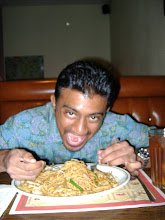What remains now are a few crumbled remains of once glorious Dutch fort and cemetery. The town is now a small fishing hamlet with bustling seafood business. Off the map. This only serves to remind that nothing is permanent except change. A wealthy city of today can be nothing tomorrow. Conversely a God forsaken place can become the hub of wealth. Ok. My point is, tomorrow India can be a superpower.
Entrance to the Dutch cemetery. Note the skeletons guarding the entrance.



Inside the cemetery



The tombstones are embossed with details about the buried person, the year of death and more timestamps which I do not understand (It is written in Dutch). Most tombstones mention Palliacatta (Pulicat), Masulipatn (Masulipatnam), coromandel and Karikal. Some of the tombstones were large with a big and small stones probably for the man and his wife. The tombstones also have the coat of arms of the deceased.

After seeing the cemetery, I am amazed by the resolution of men and their obsession for glory and gold. The Europeans came to the East seeking their fortune - some got it and some perished in the process - in a remote corner of the world, forgotten in time.

I've been here once :) it was such a nice experience :) it would have been better if someone had translated us what was written on each of those tombstones.. That would really help us in understanding the history of Pellicatta better..
ReplyDelete